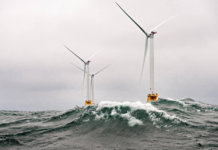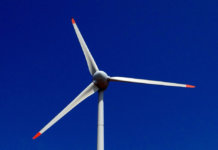To improve energy production by wind farms, National Oceanic and Atmospheric Administration (NOAA) researchers and colleagues are launching the Turbine Wake and Inflow Characterization study to make visible the ‘wakes’ produced behind wind turbines.
Ripples, waves and other disturbances form in the atmosphere downstream of turbines, similar to the watery wakes behind boats.
‘This turbulence can damage turbines downstream and harm productivity,’ says Bob Banta, an atmospheric scientist with NOAA's Earth System Research Laboratory (ESRL) in Boulder, Colo.
Banta and colleagues from ESRL, the University of Colorado at Boulder, the U.S. Department of Energy's National Renewable Energy Laboratory (NREL), and Lawrence Livermore National Laboratory have set up an experiment south of Boulder to create three-dimensional portraits of wind speeds and directions in turbine wakes.
Banta spent the last several years using a high-resolution, scanning-Doppler light detection and ranging (LIDAR) technology to make detailed profiles of the atmosphere. For the turbine project, he plans to capture turbulence and other wake effects in a broad wedge of air up to 7 km long and 1 km high. The team will use the scanning LIDAR to take a detailed look at the atmosphere in front of and behind one of the 2.3 MW turbines on the NREL site.
The researchers plan to capture the effects of ramp-up and ramp-down events – when winds suddenly gust high or die down. They also will gather data on what happens downstream when winds shift direction quickly.
The study fits under a memorandum of understanding signed by NOAA and the Department of Energy (DOE) in January.
The agreement sets up a framework for the NOAA and DOE to work together on enhancing the accuracy and completeness of resource information for weather-dependent and renewable energy technologies and infrastructure.



